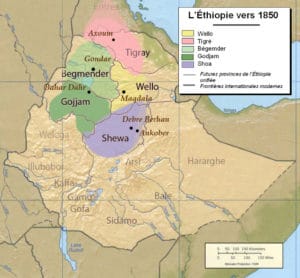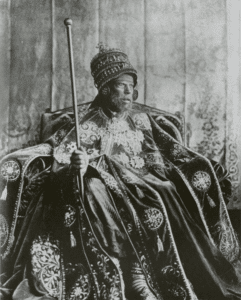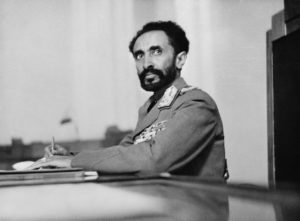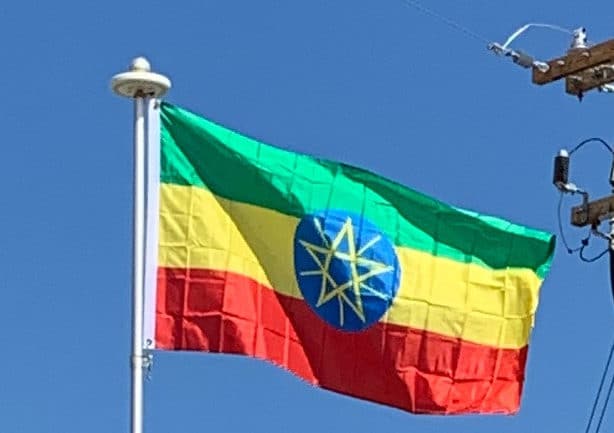
Menelik was born from King Hailemelekot of Shewa and his mother Ejegayehu Lema Adeyamo who was a servant in the royal household. He had been born at Angolala in an Oromo area and had lived his first twelve years with Shewan Oromos with whom he thus had much in common. During his reign, Menelik II advanced road construction, electricity and education; the development of a central taxation system and the foundation and building of the city of Addis Ababa—which became the capital of Shewa Province in 1881. After he ascended to the throne in 1889, it was renamed Addis Ababa, the new capital of Abyssinia.

For his leadership, despite opposition from more traditional elements of society, Menelik II is heralded as a national hero. Menelik had signed the Treaty of Wichale with Italy in May 1889 in which Italy would recognize Ethiopia’s sovereignty so long as Italy could control an area north of Ethiopia (now part of modern Eritrea). In return, Italy was to provide Menelik with weapons and support him as emperor. The Italians used the time between the signing of the treaty and its ratification by the Italian government to expand their territorial claims. This conflict erupted in the Battle of Adwa on 1 March 1896 in which Italy’s colonial forces were defeated by the Ethiopians.
About a third of the population died in the Great Ethiopian Famine (1888 to 1892).
Haile Selassie I Era (1916–1974) and Italian Ethiopia:
The early 20th century was marked by the reign of Emperor Haile Selassie (Ras Tafari). Haile Selassie I was born to parents with ethnic links to three of Ethiopia’s Afroasiatic-speaking populations: the Oromo and Amhara, the country’s two largest ethnic groups, as well as the Gurage. He came to power after Iyasu V was deposed, and undertook a nationwide modernization campaign from 1916, when he was made a Ras and Regent (Inderase) for the Empress Regnant, Zewditu, and became the de facto ruler of the Ethiopian Empire. Following Zewditu’s death, on 2 November 1930, he succeeded her as emperor.

The independence of Ethiopia was interrupted by the Second Italo-Ethiopian War, beginning when it was invaded by Fascist Italy in early October 1935, and Italian occupation of the country (1936–1941). During this time, Haile Selassie appealed to the League of Nations in 1935, delivering an address that made him a worldwide figure, and the 1935 Time Man of the Year. As the majority of the Ethiopian population lived in rural towns, Italy faced continued resistance and ambushes in urban centres throughout its occupation. Haile Selassie fled into exile in Fairfield House, Bath, England. Mussolini was able to proclaim Italian Ethiopia and the assumption of the imperial title by the Italian king Vittorio Emanuele III.
The Italians invested substantively in Ethiopian infrastructure development. They created the “imperial road” between Addis Ababa and Massaua, the Addis Ababa – Mogadishu and the Addis Ababa – Assab. More than 900 km of railways were reconstructed, dams and hydroelectric plants were built, and many public and private companies were established.
